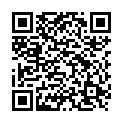|
|
|
| Module code: ABBG44 |
|
|
4V (4 hours per week) |
|
5 |
| Semester: 2 |
| Mandatory course: yes |
Language of instruction:
English/German |
Assessment:
Exam (minimum of 75% to pass) 30 minutes for Human Performance, 135 minutes for Communication
[updated 01.10.2020]
|
Exam recurrence:
The information regarding exam recurrence is found within the exam policy of the study programme (ASPO).
|
ABBG44 (P410-0029) Aviation Business (Basic), Bachelor, ASPO 01.10.2015
, semester 2, mandatory course
ABBG44 (P410-0029) Aviation Business (Basic), Bachelor, ASPO 01.10.2018
, semester 3, mandatory course
|
60 class hours (= 45 clock hours) over a 15-week period.
The total student study time is 150 hours (equivalent to 5 ECTS credits).
There are therefore 105 hours available for class preparation and follow-up work and exam preparation.
|
Recommended prerequisites (modules):
None.
|
Recommended as prerequisite for:
ABBG411 ATPL Test Preparation
ABBG49 Human Performance II & Communication II
ABBG62 Visual Flight Training II
[updated 12.05.2016]
|
Module coordinator:
Studienleitung |
Lecturer:
Matthias Lehmann (lecture)
Rolf Weymar (lecture)
[updated 04.05.2016]
|
Learning outcomes:
Human Performance and Limitations Part 1:
After successfully completing this course, students will have comprehensive knowledge about the basics of flight physiology, the relationship between body rhythm and sleep and personal health care. They will also be familiar with possible problem areas for pilots and the negative effects of intoxication and will be able to apply that knowledge to their personal life. Students will also understand the importance of human performance in aviation.
Communication Part 1:
After successfully completing this course, students will know the meaning of clear and standardized radio communication procedures in aviation. They will be able to establish and maintain the radio communication during VFR flights in English and German language.
[updated 01.10.2020]
|
Module content:
Human Performance and Limitations Part 1
1. The human body
2. The nervous system
3. The atmosphere and respiration
4. The cardiovascular system
5. The eye and vision
6. The ear, hearing and balance
7. Perceptual errors
8. Personal health and hygiene
9. Human factors in aviation
Communication Part 1
1. Communication principles
2. Standard RT phraseology
3. Call signs
4. Aerodrome phraseology for VFR flights
5. En route phraseology for VFR flight
6. Departure and approach phraseology at controlled and uncontrolled aerodromes
7. Weather reports
8. Communication failure procedures
[updated 01.10.2020]
|
Teaching methods/Media:
Lectures, speech practices, ppt and keynote presentations, white board, flip chart, iTunes U, iPad or MacBook,
[updated 01.10.2020]
|
Recommended or required reading:
- ATPL learning objectives, EASA 2016
- ATPL Human Performance, Slate Ltd. 2012
- ATPL Communication, Slate Ltd. 2014
- AIP Germany
- NfL I 275/08
[updated 01.10.2020]
|


